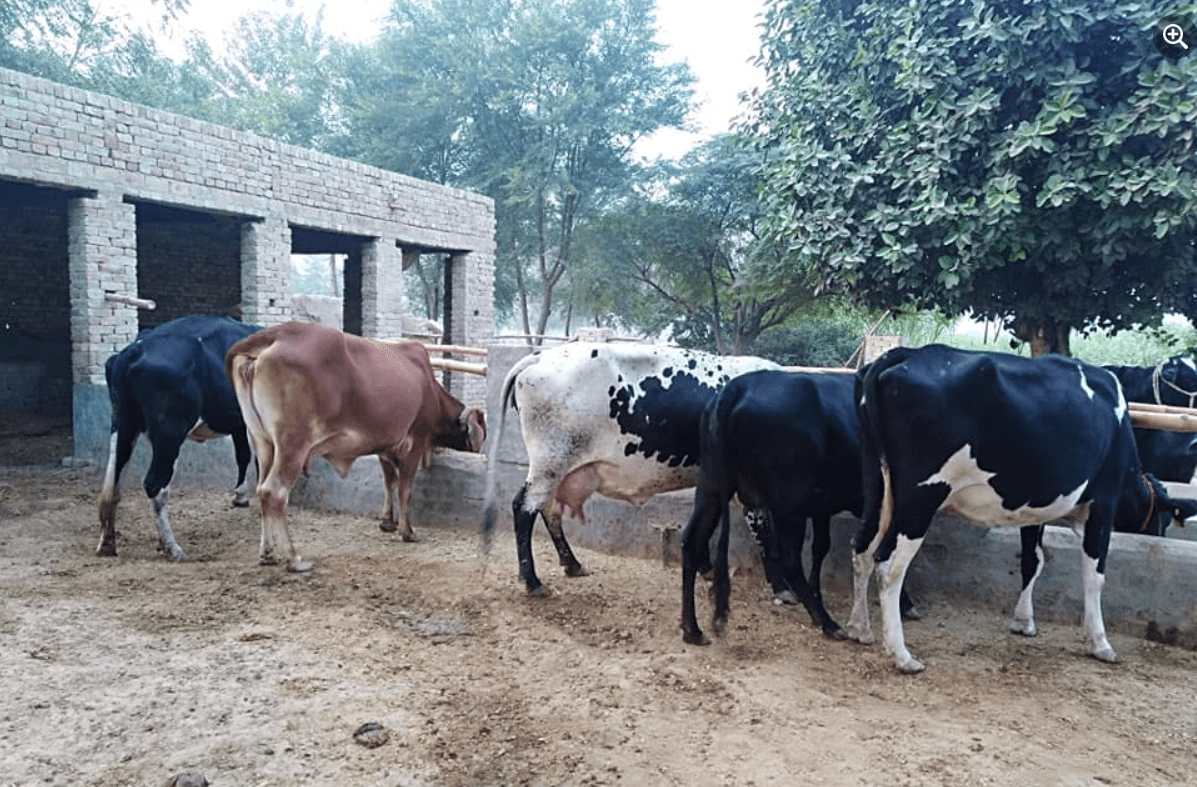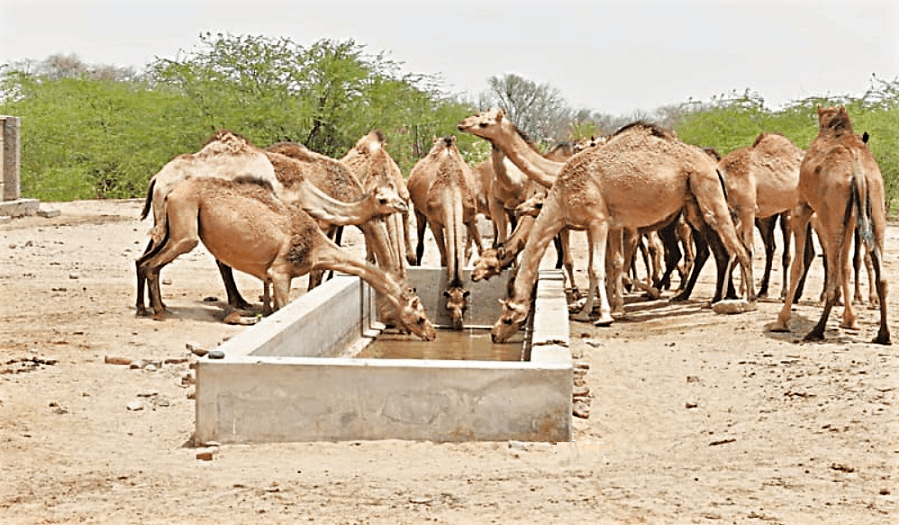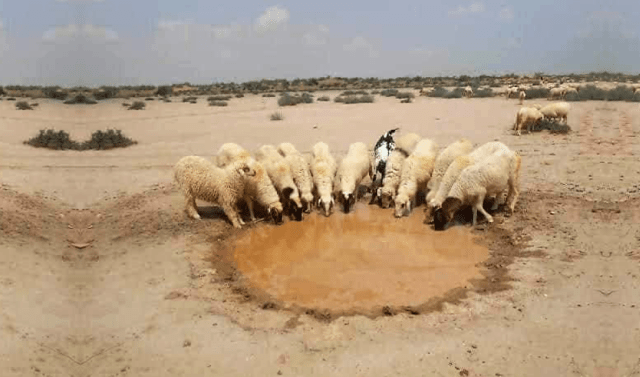Cholistan – A natural Pasture for Livestock. The Cholistan area is located in the Bahawalpur division of Southern Punjab, one of Pakistan’s under developed regions but full of natural resources.
In Cholistan, the majority of the people depend on raising livestock for a living Among all the animals in Punjab province, livestock farming provides a significant amount of the local population’s livelihood in the Cholistan region.
In Cholistan, livestock make up a sizeable fraction of the total animal population. The Great Indian Desert, which makes up roughly 3.265 percent of Pakistan’s total land area and was created by the desertification of the former Hakra river bed, extends into Cholistan.
Since this region’s soil is unsuitable for agricultural use, the native human population is forced to live a nomadic lifestyle as a result of their requirement for livestock that grows on the region’s native plants and herbs.
Cattle herders relocate with their livestock to irrigated areas and riverbanks during the year’s most oppressively hot months. The reason is that these areas provide plenty of water and food for the animals. They return to the desert (Cholistan) when winter approaches.
The people of Cholistan are always moving from one place to another in search of water and food for their cattle. Cholistan is 480 km long and has a width that varies from 32 to 192 km. Cholistan has a population of 1, 55,000 people but only 13, 18,000 animals.
The harsh weather and lack of rainfall in the area pose a hazard to livestock and wildlife. Tobas, which are built to collect rainwater in a pond and are utilized for drinking purposes for both people and cattle, are the main source of water in the desert. Rainfall is a poor source of water in Cholistan, which is collected in various ponds and utilized.
The livelihood of the people of Cholistan is mostly dependent on cattle breeding. According to an estimate, there are currently more than 16 lakh cows while apart from this, camel is also a bad source of scarcity.
The Cholistani is a versatile breed that may be utilized for meat and milk production as well as a draught animal. Livestock make up a sizeable fraction of the total animal population in the Cholistan.
Livestock farming is the main form of survival in Cholistan, where there are no other viable sources of income. It was discovered that institutions in the area are functioning independently due to a lack of coordination, and it is simple to see how much of their labor is duplicated.
The reason for keeping the average population sizes so largely is to protect against illnesses and drought concerns. In addition to this physical capital, the area has limited amounts of natural capital, human capital, and financial capital. Social capital, on the other hand, is proven to be highly robust. Livestock raising away from facilities and requirements of life is another feature of the region.
Goats and Sheep
A large portion of goats and sheep comes from the Cholistan area. In this region, organic breeding and diversified feeding practices are seen.
Limited forage and fodder supplies, increased physical exertion of animals while grazing, poor animal health, low milk productivity per animal, severely constrained milk marketing opportunities, the lack of milk preservation facilities,
It leaves the herders with few options like early milk consumption, feeding to young stock, and processing to make ghee, and low prices of live animals received when sold are some of the more peculiar issues observed.
It is impossible for males to fight for their survival in such difficult climate circumstances; hence the role of women is essential. Cholistan – A natural Pasture for Livestock
Therefore, in order to take care of their livestock, handle them, graze them, milk them, clean them, and adopt preventative measures according to the season and in times of disease, women in this region must work just as hard as their husbands.
Cholistani Cow
The Cholistani cow is renowned for its tenacious resistance to the elements. Cows from the Cholistani region can produce milk. Due to their fewer sources of income, livestock is the foundation of Cholistan’s poorest citizens.
Animal infections might result from a lack of food and water for the animals. When animals are sick, Cholistan frequently lacks veterinary medicine. The traditional knowledge of animals among the indigenous people is consequently extensive.

Due to the area being used for agriculture, the grazing condition declines, but they should state the a grazing area. Cholistan – A natural Pasture for Livestock
The provincial government’s local divisional and district managements have already begun taking action to address the water shortage in the Cholistan desert region. In hilly, rain fed, salinity-affected, and a desert location, grazing-based livestock production is an efficient and common practice.
The livestock industry plays a significant role in agriculture and holds a special place in the current administration’s national agenda for economic development. Animal farming is the foundation of the economy in Cholistan.
Camels
Apart from raising animals, there aren’t many other ways to make a living in the area. Due to the lack of a reliable water supply, agricultural farming is not possible in Lower Cholistan outside of the irrigated areas. In Cholistan, in particular, camels are treasured for their meat and milk, for use as a mode of transportation, and for recreation like racing and camel dancing.

There are two different kinds of camels in Cholistan: the Mahra or Marrecha, which are utilized for racing or dancing. For milk production, Berella is employed, and each cow can generate 10 to 15 liters of milk per day. Cholistan – A natural Pasture for Livestock.
It is crucial for supplying milk, meat, and fat to the area’s small industries as well as meeting other essential needs. The primary source of revenue for the primitive people is their cattle, which are milked, slaughtered for wool, or raised for sale.
Additionally, because of their remoteness, they had to rely solely on themselves for all of their requirements, including food, clothes, and other necessities of everyday living. Thus, all of their skills were initially motivated by necessity, but subsequently they also began exporting their items to other countries. There are 1.6 million livestock in the desert regions, according to estimates.
Additionally, the Livestock Department has the space to house over 200 animals, including dairy cows, animals used for fattening food, sheep, goats, camels, and equines.











